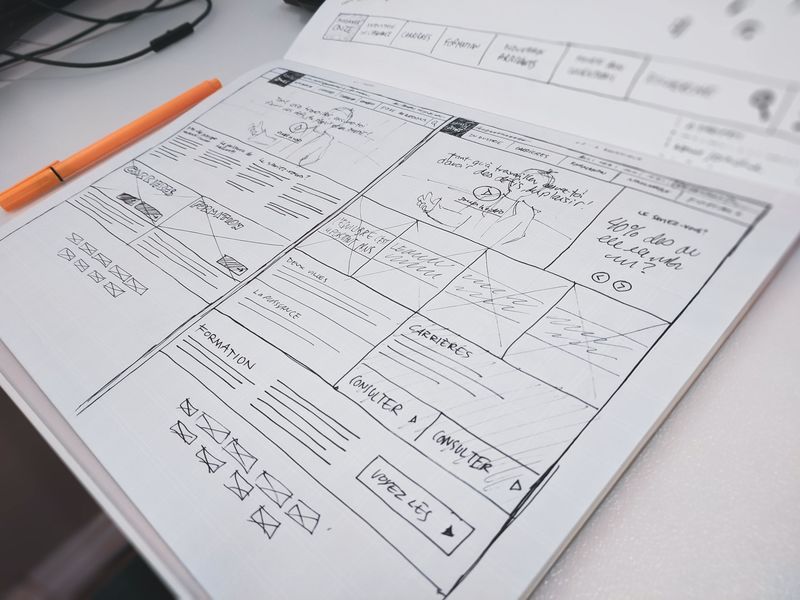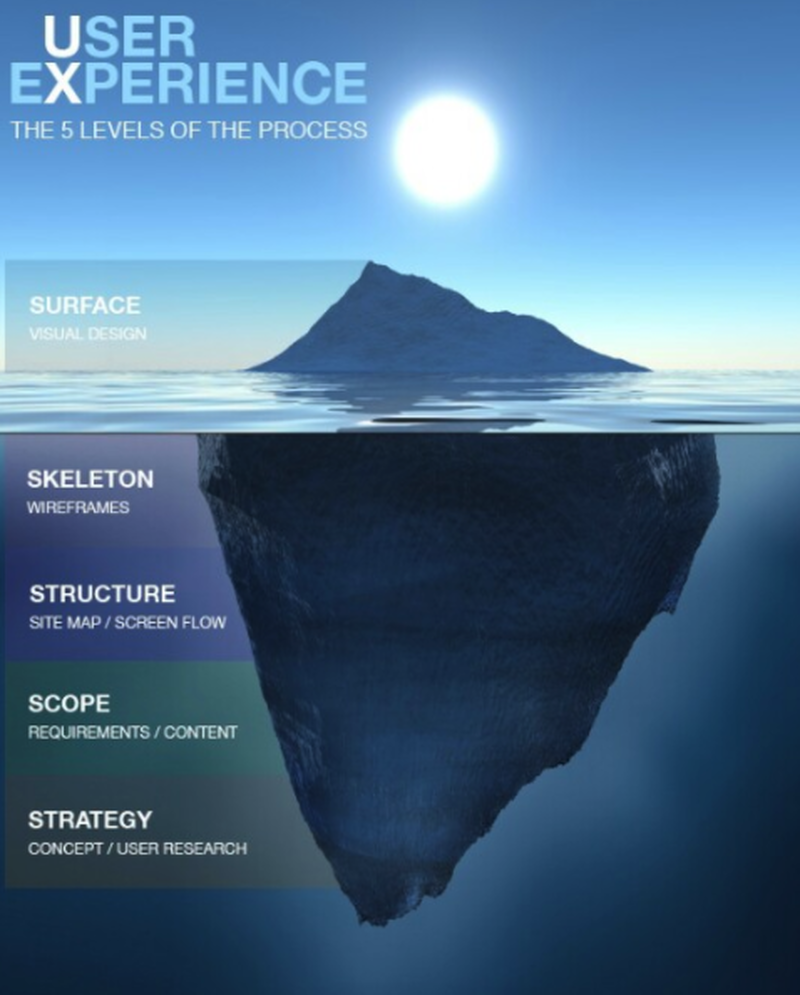
Within any single organisation (regardless of size) a single individual is handed the task of managing and executing an eCommerce replatform project. When it comes to diagnosing the critical streams of work in play for an eCommerce Replatform project, best practice suggests two figureheads are required (not one): one for each stream of work.
These are individuals who take a hands on role to execute tasks, manage the various teams and lead critical decision making throughout. The science proves there are two different types of brains needed to run replatform projects.
Business leaders need to pause and challenge their approach to a replatform project. As businesses become more strategic with their eCommerce channels, it's no longer a "one person show" in project execution. And anyone who thinks otherwise suffers from the Dunning-Kruger Syndrome.
Embedding the right people ensures the right leadership, the right knowledge/skillset and the right decision making is made throughout.
This article first defines the streams, explains who should lead each and why.
For some, they will think this topic is irrelevant because a Steering Committee acts as an appropriate support. This notion must first be addressed before we venture into breaking down the streams.
What about a Steering Committee?
The presence of a Steering Committee has its place but the issue comes in defining its role of how to guide and contribute to decision making.
A Steering Committee can suffer from the following which makes providing guidance less effective...
- They are too far removed from the project
- They lack the business wide strategic context
- They have a complete absence in the nuances of eCommerce and Digital Best Practice
Committee members will have good knowledge of their department and can make decisions in that context only. But committee members often reach beyond their competencies and subject matter expertise.
The role of the "Stream Leader" is to present issues and explain the appropriate course of action along with supporting data/information to support their recommendation. The Committee can then say "Yes/No". This can only happen with the right leaders in place.
This calls out and highlights the importance of answering the next questions
- What do the streams of work look like?
- Who should lead each stream?
- Who should be in charge of key decisions at key moments and why?
The 2 Streams of an eCommerce Replatform Project:
Instead of looking at an eCommerce replatform project as a single body of work, it should be dissected from the perspective of operations: the effective grouping of all implementation activities needed to bring a replatform project successfully to life. They are...
- UX Planning, Visual Design and Front End Development
- Development Operations, Back-End Development and System Integration
Each stream will be defined to provide clarity. For the sake of this article it will be kept brief.
Stream 1 = UX Planning and Front End Development:

This stream encompasses the following project phases...
Phase 1. Digital Style Guide:
The eCommerce Agency takes the branding collateral and turns it into a Digital Style Guide. This is a guide on how to translate the brand effectively throughout the digital channel. This includes, font types, headings, button colours, button styles etc...
This step ensures visual cohesion across the entire eCommerce channel.
Phase 2. Customer Experience Design Planning:

Customer Experience design planning is a specialist step that requires a high degree of data analysis so as to define the new journeys the business needs to offer its target consumer and existing customer to drive higher levels of engagement.
Phase 3. Wireframe Building:
The output of Phase 2 is the production of wireframes which are ugly, plain boxes defining page layouts and page element behaviour. Wireframes represent all new journeys and are built to show how these journeys are to look and behave on both Desktop and Mobile screens.

Wireframe building is a specialist skillset.
Phase 4. Visual Mockups:
Once the wireframes are approved by the business, the eCommerce Agency will then create a high volume of visual design mockups: a static representation of the experience design done for both Desktop and Mobile screen types.
Phase 5. Approving Visual Mockups = the "Pandora's Box":
This is the step of approving ever visual mock up. It's known as the "Pandora's Box" phase because it's often dictated by people of power within the business who offer subjective opinions as a guide to approving designs. This absence in science creates the vicious cycle of design re-work and can delay the project for months.
This is the power and benefit of conducting the Experience Design planning and wireframe step. It eliminates all non-scientific influence in the approval process.
Phase 6. Front End Dev:
Front End Development is where the eCommerce Agency takes the approved visual designs and applies a technical (development) process to apply/attached all approved designs to the eCommerce platform.
Phase 7. Defining and Preparing Content:
Once the designs are approved, content needs to be prepared to fit the journeys/experiences that have now been constructed. Now that designs are done, the business can see more clearly the content required to bring new experiences to life.
Designs are the body but content is the oxygen

Phase 8. UAT:
This is the process of testing how the front end planning comes to life in a dynamic environment. The front end development team(s) have completed the process of attaching the approved designs to the platform and done their own testing. But the true testing comes when the right people leads the audit process.
It's easy to approve visual designs in the static environment (visual mockups). It's a different world when assessing new experiences when new page layouts and functional elements are working in a dynamic environment. Things are now shifting and moving around the page (clickable elements) on various screen types.
This is a rigorous process key people on the business side must own. Every step of the journey must be scrutinized.
Stream 2 = Dev Ops, Back End Development, and System Integration:
These next stream will also be kept high level and written in layman's. This over-simplification is not a reflection of the arduous nature of this stream. It's highly complex and crucial in laying down the foundation of how the new eCommerce platform interacts with an array of existing business systems (ERP, CRM, Marketing Automation etc...).
All future rapid deployment initiatives have a direct dependency on the quality of this second stream.

This stream can be summarised in four phases..
Phase 1. Dev Operations:
- This is the best practice set up of all technical resources involved in the replatform project.
- The eCommerce platform software instance is set up and prepared for development.
- Hosting infrastructure is set up for the eCommerce platform and other supporting technologies.
While best practice is applied here, there will always be unique nuances to this phase based on the approved scope of work.
Phase 2. System Integration:
This is a custom phase involving the connectivity of the eCommerce platform to all relevant business systems.
There are a wide array of complexities because of the need to speak to third-party business systems. This is made more complex due to the common requirement of needing the assistance and collaboration of third party teams who support the external systems.
Phase 3. New Code Creation - Developing Unique Solutions:
Depending on the scope, there may be a need for the eCommerce Agency to apply custom coding to meet all agreed needs of the client which are not covered by the eCommerce platform and/or existing business systems.

Phase 4. UAT:
This is a complex series of testing to ensure...
- All systems are speaking to each other to the right standard
- All information is moving from one system to another
- When information from one system passes into a new system (such as the new eCommerce platform), testing is required to ensure this information is sitting in the right places in the new system
Stream 1 is Undefined while Stream 2 is Highly Defined:
The above summary illustrates the distinction between the two unique workflows. However, there is one other notable difference between these two streams that everyone glosses over and influences the type of leadership required...
Stream 2 is highly defined and Stream 1 is not defined at all.
eCommerce Agencies and Businesses work through a "Discovery/Scoping" process which focuses on two things...
- How the selected eCommerce Platform is to be configured or set up to meet business needs
- The Integration needs of the business: defining in detail how the eCommerce platform will connect to existing business systems
Why is this?
While many eCommerce Agencies say they are "Full Service - Design and Dev", their DNA is centered around highly gifted technical brains. This allows them to accurately define everything which encompasses Stream 2. Once done, they loosely apply pricing for Stream 1 ("UX Design").
If you think this sounds unusual, why do you think eCommerce Agencies limit the amount of design revisions in Stream 1, Phase 5 (see above)? It's because they know Stream 1 is undefined and to protect themselves, they limit the amount of effort they will undertake in the visual design phase.
This is how eCommerce Agencies provide definition to an undefined stream of work.
What does this mean for Stream 1?:
Both Streams are important for different reasons. If businesses wish to flourish and drive growth via the online channel, there needs to be as much definition in Stream 1, ahead of time, as there is in Stream 2.
To gain the UX-clarity every business lacks in replatform projects requires tight collaboration with a Customer Experience Design Specialist who can lead all the activities in Stream 1 and lead the planning process.
Why Plan Ahead for Stream 1?:
When forward planning journeys/experiences, a business is defining new and improved methods to drive consumer engagement. This clarity produces a long list of technical needs and requirements the business must have.
In the physical world, consider what's required to train new frontline salespeople. Once you define how you want them to interact with people on a one-on-one basis the training needs to bring those interactions to life become clear.
A more simpler way to think of this is, the visual design step of a replatform project (in Stream 1) is the tip of the iceberg in defining new experiences.
The process of constructing a new and improved experience design (or use experience) comes from strategic planning that defines business needs which produces project scope. In the execution of the project there is the technical structure of the eCommerce platform (including system integration) and wireframes culminating to visual static designs (the "Surface").

The road map and scope for Stream 2 comes from the planning that dictates Stream 1. While they are unique streams, they are inextricably linked.
It's important to note, the eCommerce Replatform planning process needs to be flipped on its head...
Plan FIRST for the experiences you want to deliver then plan SECOND for the technology capabilities needed to bring these experiences to life
This is the crux as to why a Customer Experience Design Specialist leads planning.
Conclusion - Who Should Lead Streams 1 and 2?:
A Customer Experience Design Specialist collaborates and shares the lead of Stream 1 with the Business. The CTO leads Stream 2.
It's important for these two brains (customer-centric and system infrastructure-centric) to collaborate throughout, but it's not a single person leading the entire project.
Would you want a Developer or CTO to sell and interact with your existing customers and potential new customers? If you answer "No - of course not" then why are these people running your Stream 1? These are smart gifted individuals who are best utilised when they focus on Stream 2 and collaborate with customer-centric brains.
When it comes time to plan your replatform project, consider the above, plan and resource appropriately. It will ensure the success of this business effort and investment.
This article was as tagged as Best Practice , Digital Transformation , eCommerce Consulting